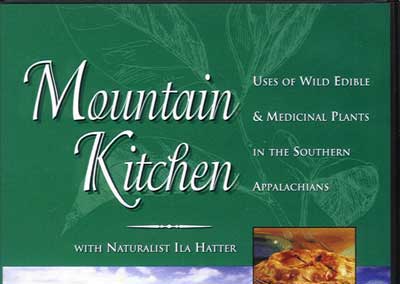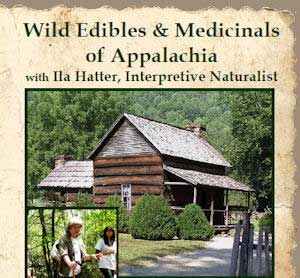Apr 10, 2015
Price: US$ 16.95 Includes Shipping Item #C103 Mail Order Plants of the Cherokee: Medicinal, Edible, and Useful Plants of the Eastern Cherokee Indians After languishing for 50 years in libraries, archives and attics around the southern Appalachian region, the following manuscript by William Banks was brought to the attention of Great Smoky Mountains Association by two of the organization’s most active members: Jerry Coleman and Ila Hatter. Mr. Coleman and Ms Hatter live near the Cherokee reservation in western North Carolina and are recognized experts on edible and medicinal plants in the area. They were overjoyed to discover the existence of the manuscript and devoted themselves to seeing that it be published. Staff at the National Park Service and Association were equally excited to learn of Banks’ masters theses. During the early 1950’s, when Banks did his research, there were still quite a few elder Cherokee and others who continued the old ways of using wild plants for a wide variety of medicines, food crafts, and other purposes. Today, attempting to conduct such research would be much less fruitful. It should be mentioned that Banks’ thesis advisor and mentor, Dr. A.J. Sharp, was one of the most widely recognized and respected experts on the botany of the Great Smokies and southern Appalachians. His career as botanist, professor, writer and advisor spanned more than 60 years. Sharp’s role as overseer on this project lends it great credence. Plants of the Cherokee Serendipity: “…making desirable but unsought-for discoveries by accident” was exactly how this manuscript came into my hands. I heard of Banks’ thesis from Dr. Jack Sharpe (Professor Emeritus of UT)...

Apr 10, 2015
Mountain Kitchens DVD Price: US$ 15.95 Includes Shipping Item #V101 Mail Order The layman’s guide to the history, legend and lore of wild crafting! Join Ila Hatter, the “Lady of the forest,” to discover beneficial and little known uses for many of the plants in the Southern Appalachian Mountains. Ila shares her favorite recipe for Harvest Pie, made of elderberries and other indigenous wild edibles from this region. Then meet one of Ila’s closest friends and wild crafting counterparts, Amanda Swimmer – a Cherokee Indian whose family has lived in these mountains for hundreds of years. Together they take you back to a time when things were simpler, slower…and all you needed was what the forest...
Apr 9, 2015
WILD EDIBLES & MEDICINAL OF SOUTHERN APPALACHIA by Ila Hatter Ironweed Productions (Robbinsville, NC.) Summer, vols. I & II, and Autumn. 30-35 minutes. Three videos follow the seasons. Approximately 30 minutes each. This is one of the best video herb walks I’ve seen. Going on an herb walk with Hatter, even via video, is a fun experience. her warm, friendly style shines through as she shows the viewer eight to nine Appalachian herbs in each of 3 videos. It is easy to see that she has been doing public herb walks for some time. the videos combine artistic photography with lots of herbal information on wild herbal medicines and foods as Appalachian music plays in the background, adding an especially nice touch. Each one begins with a historic view of medicinal herbs at the Oconaluftee Indian village in North Carolina. Helpful overlays give Latin names of the plants and various facts such as cautions about collecting on public lands and using certain herbs. Hatter presents both Indian and Appalachia “granny” knowledge, lore, and stories along with her own experiences. (I especially liked the shots of the possum during the persimmon story.) She shows visual demonstrations of harvesting techniques and how to tell the difference to aid in plant identification. Hatter’s rule of three is positive Identification, an unpolluted Location, and leave the first three plants for Multiplication. Other plant experts, such as those at the Great Smoky Mountain Environmental Institute at Tremont in North Carolina, are brought in. All videos review all the herbs discussed at the end. Small color photos of them also appear on the back of...

Apr 9, 2015
3 Pack DVD – Summer Series 1, 2 & Autumn 1 Price: US$ 35.00 Includes all 3 titles and shipping Item #V113 Wild Edibles Summer Video 1 Step back in time for a roadside ramble. Listen as Ila Hatter, the “Lady of the forest,” explains which plants can be used as medicinals. Hear the enchanting tale of New Jersey Tea and how Martha Washington revived George’s troops, enabling them to beat the British after serving the hot liquid to the frigid soldiers. From sore throat soothers to insect bite relievers, join Ila as she tours the forest in search of these indigenous healers. Learn the very valuable lesson that Ila lives by: “Everything that is harmful in nature has its antidote growing nearby, if you but recognize it!” With authentic Appalachian music in the background, Ila Hatter leads the viewer into the fields and forests, which for her are a “table always spread.” With a storehouse of knowledge, she shares folklore, recipes, and remedies of familiar plants and trees. Included are identification tips and rules for responsible foraging. The video also features Dr. James A. (Jim) Duke, Ph.D., singing Ginseng. Plants covered in Video #1 are: Revolutionary Tea; Lamb’s Quarters; Mullein; Monarda; Mountain Mint; Spearmint; Plantain; Purslane; Jewelweed; Yellowroot; Ginseng; and Blackberry. Wild Edibles Summer Video 2 Continue the roadside ramble and learn more about Mother Nature’s table. Go back to a time when “most of what you owned you made yourself.” Find out how to make wine, jam and pies out of elderberries, which also produces a cough syrup that will help flu! Listen as Ila Hatter tells...



Recent Comments